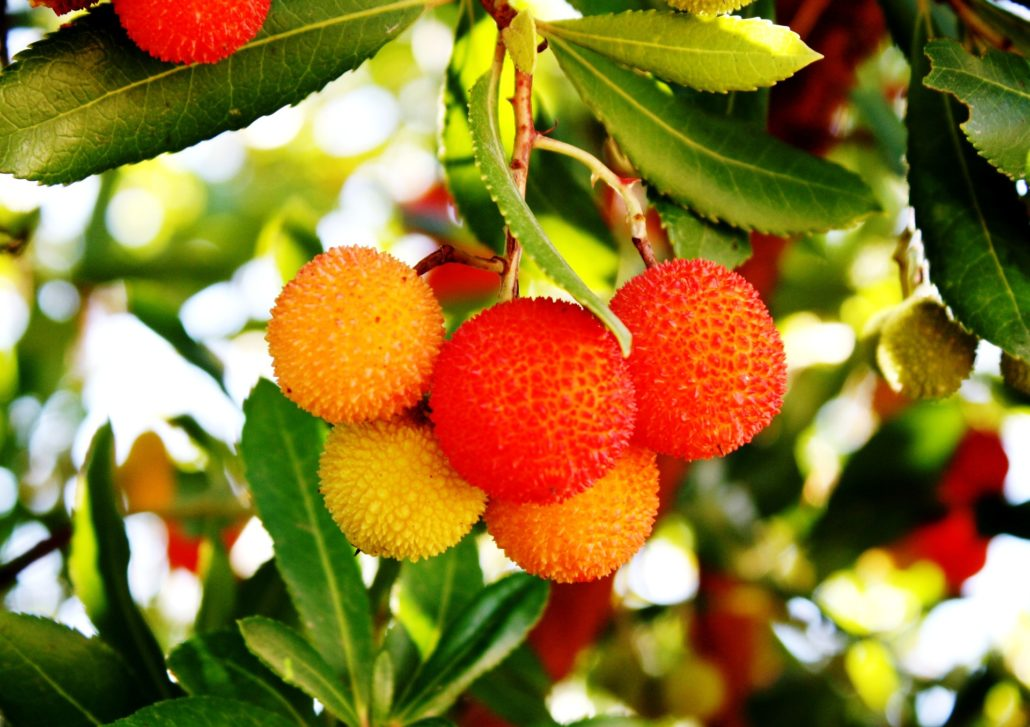7 Benefits from Strawberry Tree Honey
A little bit of Culture
There is no need to search far and wide to find a high quality honey, healthy and beneficial.
In Italy we have many products that have these properties, including honeys, in particular Strawberry Tree Honey: rare, healthy, beneficial, and thus expensive.
Strawberry tree are slow growing plants, belonging to the Ericaceae family, and only in favorable and sheltered areas they can reach 6 to 10 meters in height. Unfortunately, due to fires and deforestation, they hardly exceed 2.5 meters. Shrubs can be found throughout the Mediterranean belt of the southern European regions, in smaller numbers in the central belt, and even in Ireland.
Taking a step back in history, it is said that the ancient Romans gave the name Arbutus unedo to this particular plant. Virgil in the Georgics, in fact, called this so widespread tree in Italy, arbutus. Pliny, on the other hand, used to call it like his contemporaries, unedo, which derives from unum edo “I eat only one“, simply to indicate how unpleasant (bitter) the taste of the fruit of the strawberry tree was.
Nowadays, the strawberry tree is much loved for the fruits’ bright red colors, for the contortion of its branches and for its white bell-shaped flowers.
Indeed, from these beautiful white bellflowers, bees obtain a very high quality nectar, which they transform into a very special honey.
The 7 Benefits
1. Very rich in Antioxidants:
Strawberry tree honey is characterized by a very high presence of antioxidants, some say even more than honeydew, which are very useful for fighting free radicals in the body.
2. Anti-inflammatory:
Moreover, due to the large amount of antioxidants, strawberry tree honey becomes a strong antiseptic and anti-inflammatory. In fact, it is widely used to relieve intestinal pain and, mainly, sore throat and cough due to bacterial contamination in the oral cavity. One teaspoon in the morning.
3. Against some asthmatic symptoms:
It is NOT a substitute for medical therapies!
However, strawberry tree honey can be an adjuvant (helper) of anti-asthma therapies, thanks always to the large presence of antioxidants.
4. Energizing:
Like all honeys, being rich in natural sugars (glucose + fructose), strawberry tree honey is a powerful energizer. It is able to give immediate energy due to glucose, useful after a great physical or mental effort and reserve, given by fructose.
5. Diet:
Surely, including strawberry tree honey in your diet is certainly beneficial. Despite being composed of sugar crystals (300 kcal per 100 g), it has fewer calories than traditional sugar (392 kcal per 100 g) and cane sugar (362 kcal per 100 g).
Although, this does not mean that by taking honey you are going to lose weight! However, it will certainly bring lower amounts of kcal and greater benefits to the body.
6. For Children:
As mentioned before, being effective against cough in adults, it is even more in children. Many times it happens that children get a cough, for various reasons, one teaspoon before bed relieves the symptoms.
7. Prebiotic:
Strawberry tree honey is very rich in prebiotic substances. Unfortunately, we are not able to digest them, even so they reach the intestine and help the intestinal flora to proliferate. These substances are mainly the oligosaccharides present in honey, including FOS (Fructose-Oligosaccharides).
WARNING!
Just like almost all honeys, strawberry tree honey loses many of its benefits when dissolved in hot drinks!
It is recommended to take ½ teaspoons a day. Dissolve it in cold water or add it with few lemon drops to get the best result!
Curiosity
El Oso y el Madroño
In Madrid, Spain, at Puerta de Sol square, in the historic city center, there is a statue of a very greedy bear, on its hind legs, trying to reach the fruit of a tree. The tree in question is a Strawberry Tree. The statue, built in the second half of the 20th century, has become the symbol of the city itself. The animal, very common in the 13th century, relies on a madroño (strawberry tree) trying to “savor” the bitter berries. Furthermore, these berries have been very useful to the population to recover from the malarial fevers that struck in the 1500s Madrid. Surprisingly, among those who recovered, there was the Emperor Charles V, who then placed the five-pointed crown on the new coat of arms of the city shield.




 Taste Lovers
Taste Lovers
Leave a Reply
Want to join the discussion?Feel free to contribute!